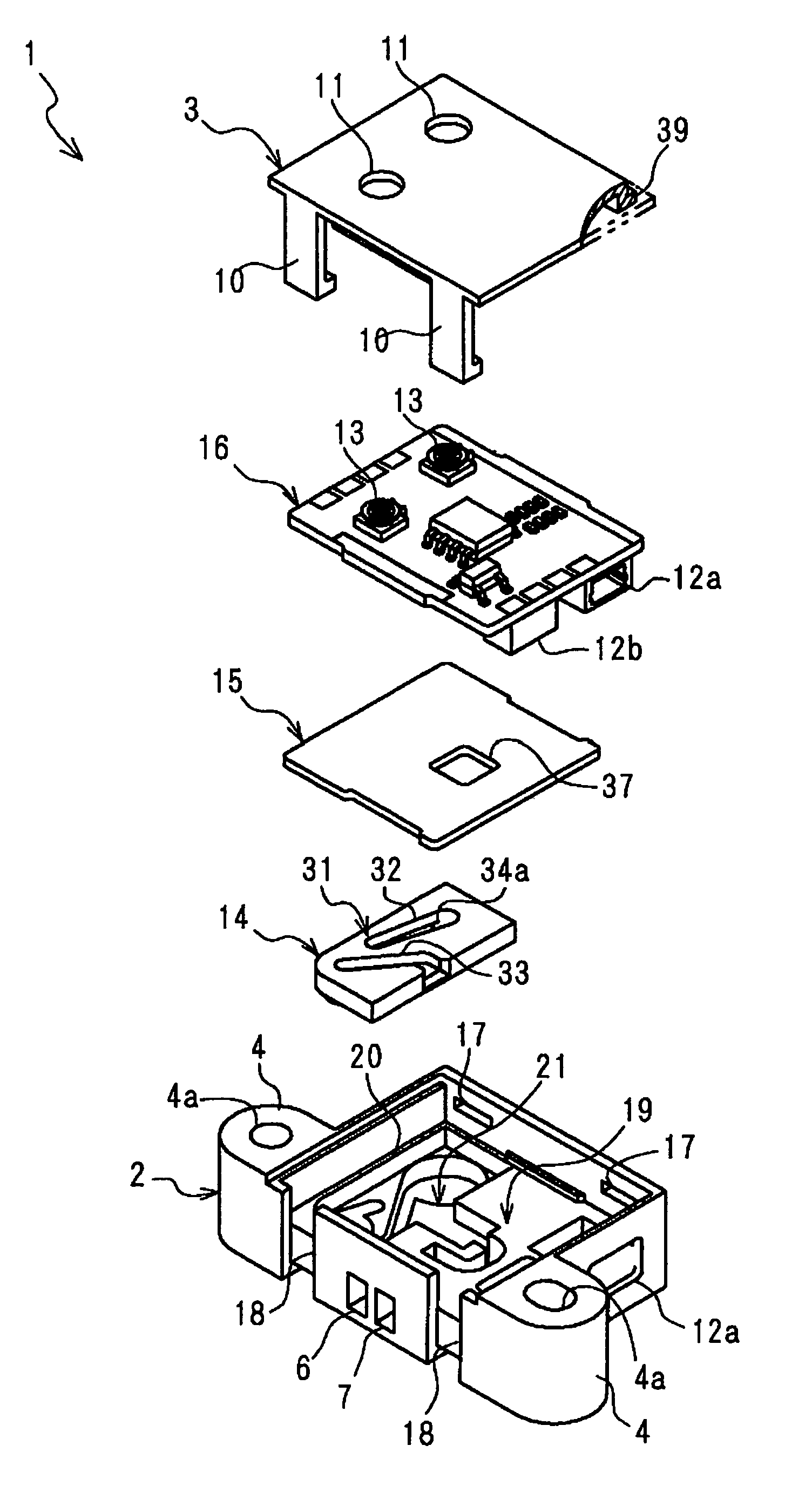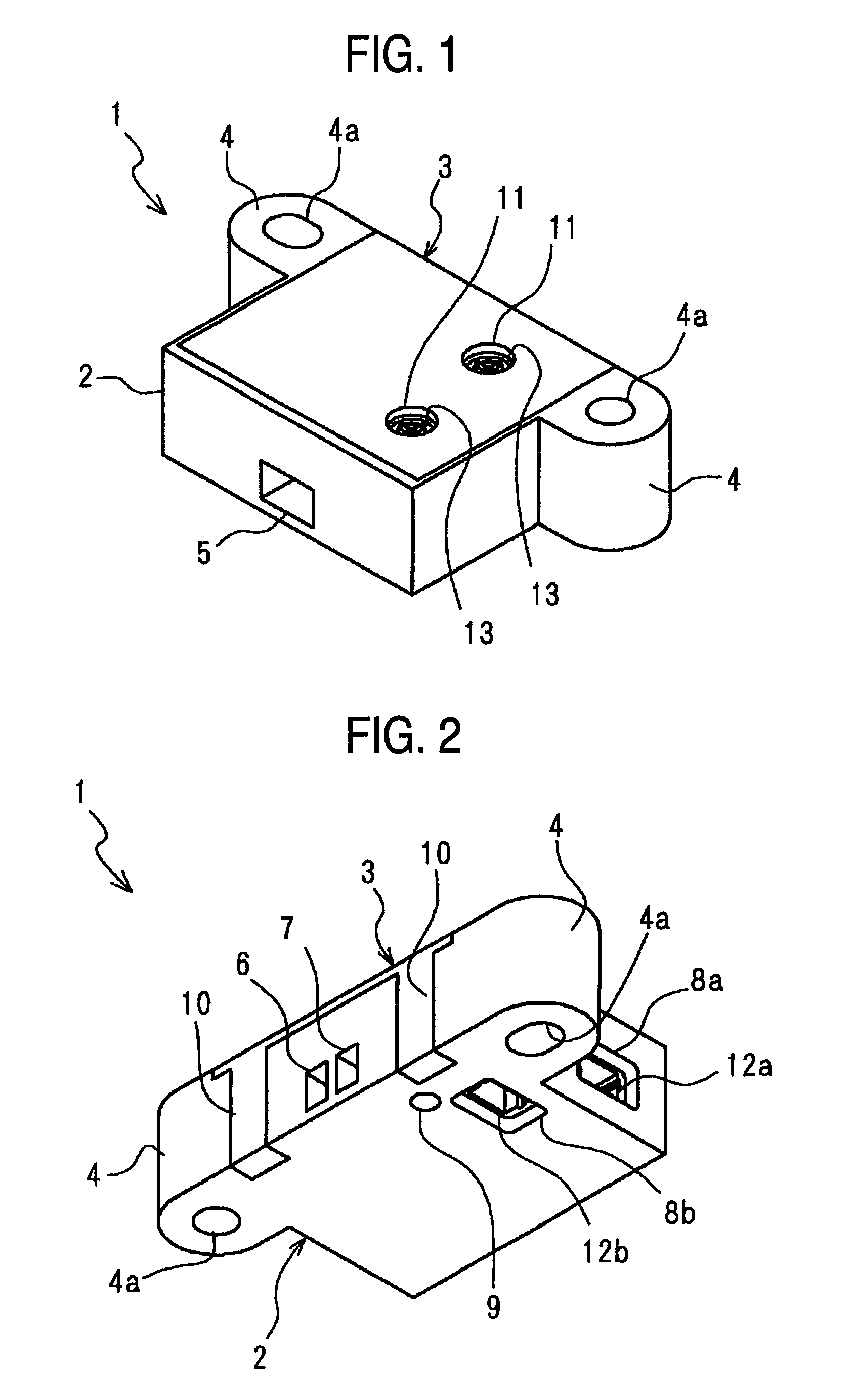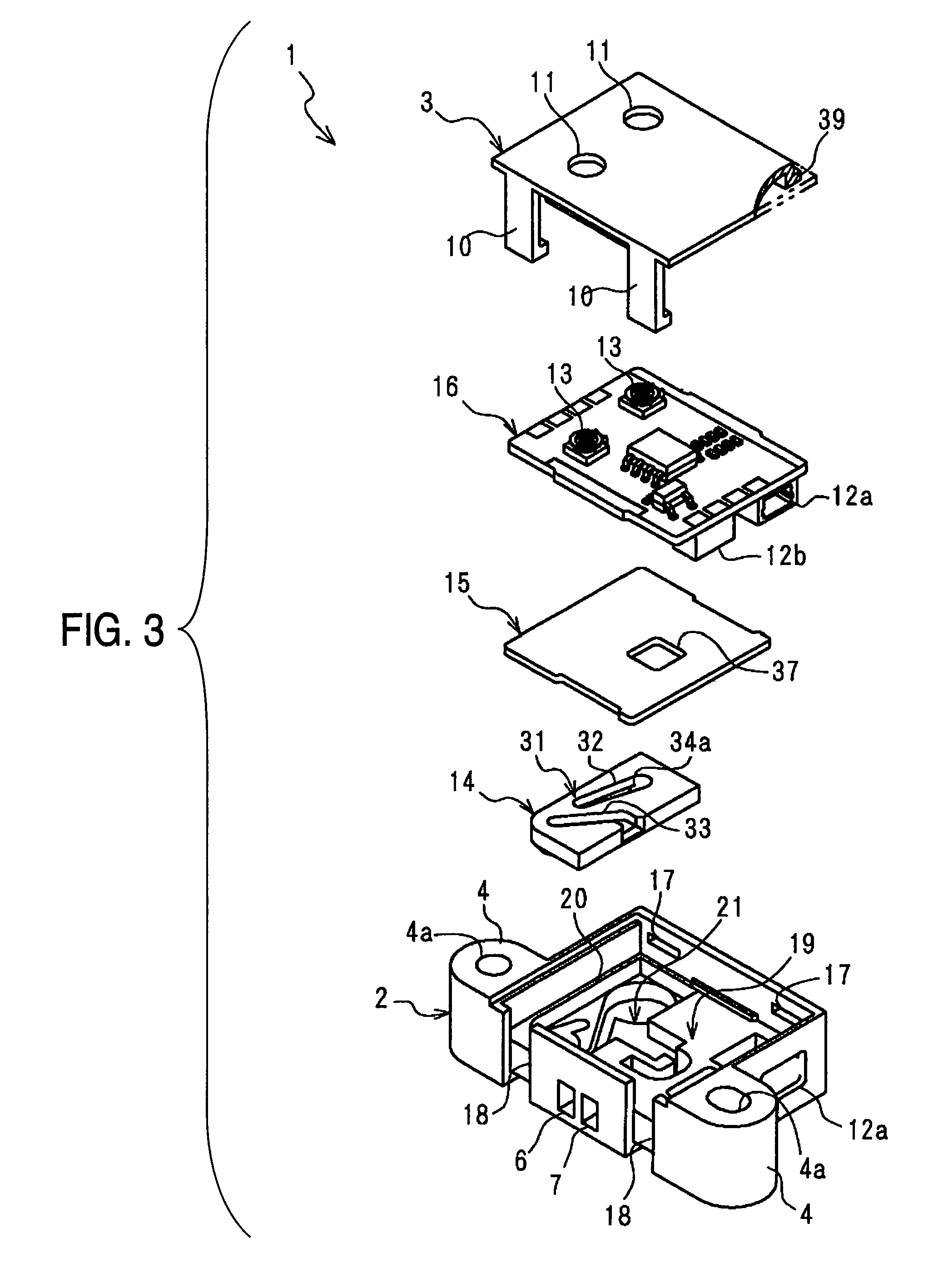Flow velocity measuring device
a flow velocity and measuring device technology, applied in the direction of liquid/fluent solid measurement, volume metering, instruments, etc., can solve the problems of device limited in the applicable range, increased fan in revolutions, and accuracy degradation, so as to achieve efficient separation of dust and dirt and accurately measure the flow velocity of fluid
- Summary
- Abstract
- Description
- Claims
- Application Information
AI Technical Summary
Benefits of technology
Problems solved by technology
Method used
Image
Examples
Embodiment Construction
[0036]FIGS. 1 and 2, respectively, are views showing a flow velocity measuring device 1, according to an embodiment of the invention, as viewed from obliquely upwardly of the front and obliquely downwardly of the back. The flow velocity measuring device 1 mainly serves to measure the flow velocity of an air, and comprises a housing 2 including a first layer substrate and a cover 3. The housing 2 is shaped to provide overhangs 4 on sides of a rectangular solid, the overhangs having screw holes 4a for fixation of the flow velocity measuring device 1 to a location of measurement, the housing including an intake port 5 on a front surface thereof for taking in a flow of an air being measured, a first discharge port 6 and a second discharge port 7 on a back surface thereof, a first connector hole 8a on a side thereof, and a second connector hole 8b and a positioning hole 9 on a bottom surface thereof. The cover 3 is mounted on an upper surface of the housing 2 by means of two hooks 10 for...
PUM
 Login to View More
Login to View More Abstract
Description
Claims
Application Information
 Login to View More
Login to View More - R&D
- Intellectual Property
- Life Sciences
- Materials
- Tech Scout
- Unparalleled Data Quality
- Higher Quality Content
- 60% Fewer Hallucinations
Browse by: Latest US Patents, China's latest patents, Technical Efficacy Thesaurus, Application Domain, Technology Topic, Popular Technical Reports.
© 2025 PatSnap. All rights reserved.Legal|Privacy policy|Modern Slavery Act Transparency Statement|Sitemap|About US| Contact US: help@patsnap.com



